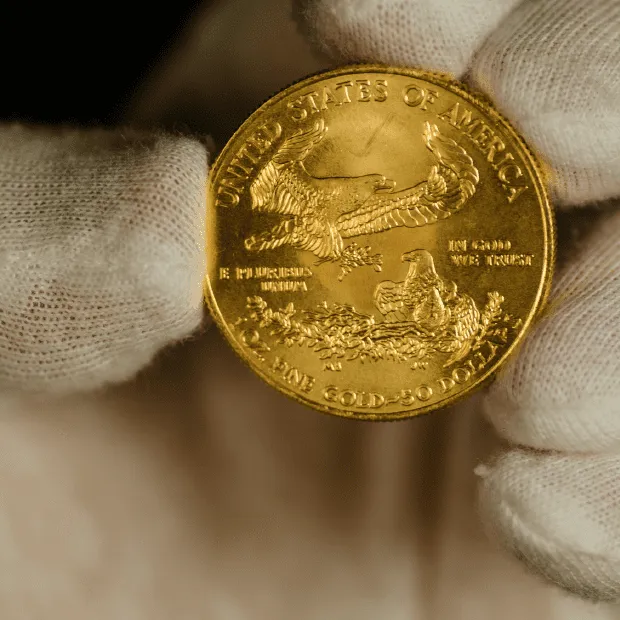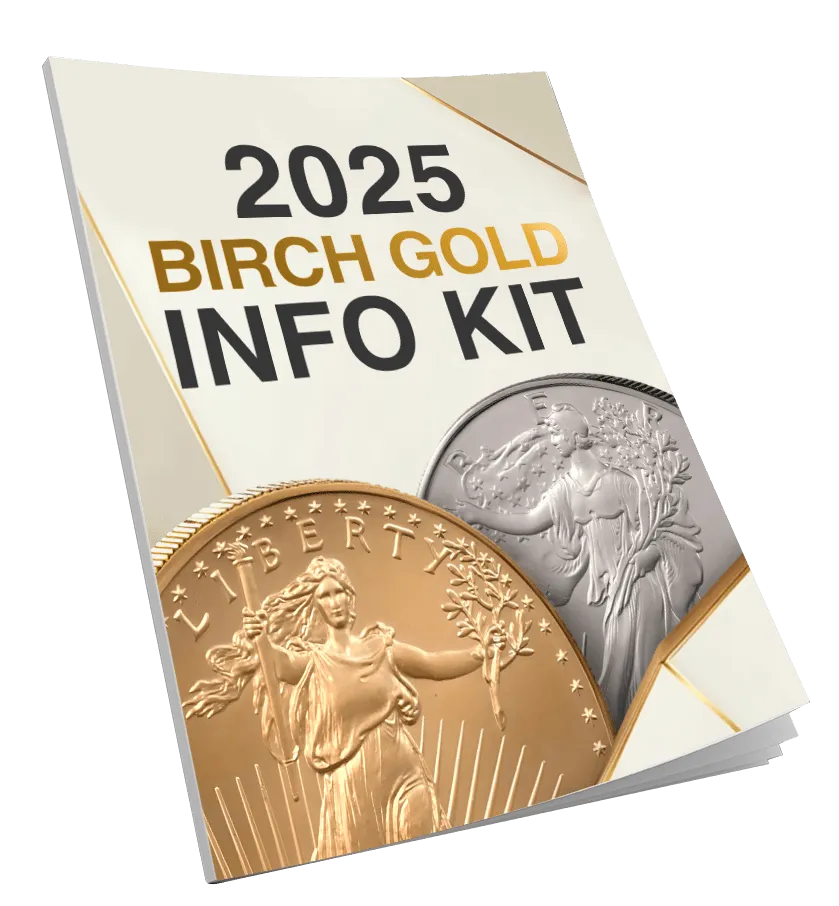Why a Kit Beats Guesswork
If you’ve clicked on an article about gold IRAs, chances are you’re worried about at least one of the following:
- Inflation is eroding purchasing power faster than your bond fund can keep pace.
- Market volatility makes even diversified stock portfolios feel like roller coasters.
- Currency risk heightened by record‑breaking deficits and rapid‑fire monetary policy pivots.
Those concerns are legitimate and shared by retirees and fiduciaries alike. But reacting without reliable data can do more harm than good. This is why seasoned investors lean on concise, evidence‑based resource kits before wiring a single dollar into a new asset class.
Unlike generic blog posts, a well‑built kit lays out:
- Regulatory guardrails, so you don’t stumble into tax penalties.
- Cost structures, so “hidden fees” don’t blindside your long‑term returns.
- Logistical roadmaps, so you can picture exactly how your money and your metal move.
With that foundation, decisions shift from emotional impulse (“Gold is surging! Buy now!”) to strategic action (“Allocate 7 %, rebalance annually, review fee drag every January”).
In short: A free Gold IRA kit is less about free paper and more about paid‑in‑full peace of mind.
Gold IRA 101: The Essentials
What Is a Self‑Directed Gold IRA?

A self‑directed IRA (SDIRA) allows you to hold assets beyond Wall Street staples, think real estate, private equity, and yes, physical precious metals. A Gold IRA is a subtype in which your IRA buys IRS‑approved bullion (gold, silver, platinum, or palladium) and stores it in a secure, third‑party vault.
Traditional vs. Roth: Tax Mechanics
| IRA Type | Contribution Tax Treatment | Withdrawal Tax Treatment |
|---|---|---|
| Traditional | May be deductible now | Taxed as ordinary income later |
| Roth | After‑tax now | Tax‑free withdrawals principal and gains after age 59 ½ (and five‑year rule) |
Either way, gains compound without annual capital‑gains tax, letting you ride multi‑year metal cycles more efficiently than in a taxable brokerage account.
Eligible Metals & Purity Rules
- Gold ≥ 99.5 % purity (American Gold Eagle, Canadian Maple Leaf, PAMP Suisse bars).
- Silver ≥ 99.9 % purity (American Silver Eagle, Philharmonic).
- Platinum & Palladium ≥ 99.95 %.
Collectible coins (numismatics) are generally disallowed; the IRS wants standard, fungible bullion it can easily value.
Storage & Insurance
The IRS forbids “self‑storage” if you want to keep tax benefits. Your metals must live in an approved depository often insured up to $1 billion, audited at least annually, and segregated (stored separately) or commingled (pooled by type) according to your preference and budget.

Common Fee Categories
- One‑time setup: paperwork, custodian onboarding (≈ $50).
- Wire fees: nominal, sometimes waived for larger accounts.
- Annual admin + storage: flat ($180–$230) or asset‑based (0.4–1 %).
- Spread/commission: the markup between wholesale and retail bullion pricing.
Understanding these line items is critical because a low spread with a high percentage‑based storage fee or vice versa can erode supposed “safe haven” returns. Kits that lay costs bare are your first defense.
The Role of an Educational Kit in a Murky Market
“Read the prospectus.” We all know the mantra, yet few retirement investors wade through 300‑page filings. Precious metals add another layer of jargon: LBMA accreditation, COMEX vault protocols, segregated vs. allocated storage. A Gold IRA kit distills that complexity into a format you can finish over one cappuccino and reference later.
Good kits answer at least three questions clearly:
- How do I move money without IRS penalties?
- What will this actually cost, in dollars and cents, year by year?
- How secure is the metal, and how fast can I liquidate if needed?
Many kits also sprinkle in historical charts, expert Q&A, and worksheets so you can compare providers apples‑to‑apples. Think of the kit as your personal due diligence starter pack, free, portable, always accessible.
Unpacking Birch Gold Group’s “Insider’s” Info Kit

Birch Gold, founded in 2003, produces one of the industry’s most downloaded kits updated annually (the 2025 edition clocks in at 24 pages). Below is an at‑a‑glance profile, followed by a detailed section‑by‑section guide.
| Aspect | Details |
|---|---|
| Length | 24 pages, PDF or mailed booklet |
| Authors | Birch’s team of former wealth managers, vetted by custodians & depositories |
| Focus | Gold IRA mechanics, cost transparency, storage logistics, market data |
| Extras | Blank fee‑comparison worksheet, rollover checklist, glossary |
Notably, the kit doesn’t hide Birch’s identity. Their logo is on every page. But the copy is educational, not hard‐sell:
- No pop‑up discounts.
- No scary countdown timers.
- Just citations, diagrams, and “call us if you have questions” footers.
For a free document, that balance of content vs. pitch is refreshing.
What Each Section of the Kit Teaches You
Gold IRA Fundamentals (Pages 2–4)
Quick refresher on SDIRA rules, Traditional vs. Roth tax math, and metal purity specs. A flow diagram shows money moving from your current 401(k) custodian to a new self‑directed IRA custodian, then onward to the depository.
Funding Pathways (Pages 5–7)
Three colored swim‑lanes illustrate:
- Direct contribution (new money up to IRS limits).
- Trustee‑to‑trustee rollover (most efficient, avoids 20 % withholding).
- 60‑day rollover (more control, higher IRS audit scrutiny).
Checklists flag which IRS form applies in each scenario.
Storage & Insurance (Pages 8–10)
Side‑by‑side table of Brink’s, Delaware Depository, and Texas Precious Metals Depository:
| Feature | Brink’s | Delaware | Texas |
|---|---|---|---|
| Insurance | $1 B | $1 B | $1 B+ |
| Segregated Option | Yes | Yes | Yes |
| Audit Frequency | Quarterly | Semi‑annual | Quarterly |
Diagrams show how segregated boxes differ from commingled racks. Bullet points debunk myths (“The vault keeps my exact coin serial numbers? Yes, if segregated.”).
Custodian Roles (Pages 11–12)
Explains why Equity Trust Company or STRATA Trust must report annual Form 5498 values to the IRS. This section also outlines distribution logistics:
- Cash sale inside IRA → custodian wires proceeds.
- In‑kind distribution (taking physical coins) → metals shipped to you, reported on Form 1099‑R.
Fee Transparency Worksheet (Page 13)
A blank table prompts you to gather:
- Setup fees
- Annual admin fees
- Annual storage fees
- Spread/commission on purchase
- Minimum investment
Birch’s own numbers are pre‑filled for reference (≈ $50 setup, $180–$200 annual flat bundle). Columns for “Competitor A” and “Competitor B” encourage true comparison.
Market Trends & Data (Pages 14–18)
Graphs plot:
- 50‑year gold price vs. CPI.
- Gold returns during the five worst S&P 500 drawdowns.
- Central‑bank gold purchases since 2010.
Footnotes cite World Gold Council, St. Louis Fed, and IMF data nice academic rigor.
Five Rookie Mistakes (Pages 19–20)
- Buying numismatics inside an IRA.
- Skipping segregated storage without realizing coins can’t be easily swapped.
- Assuming storage fees disappear after retirement (they don’t).
- Ignoring RMDs for Traditional IRAs holding metal.
- Over‑allocating to a single metal (silver’s volatility vs. gold’s stability).
Action Plan (Pages 21–24)
Step‑by‑step blueprint:
- Highlight content questions.
- Book a 15‑minute consult.
- Decide allocation percentage.
- Execute rollover.
- Revisit annually.
Contacts and QR code for scheduling to finish the booklet.
Putting the Kit to Work in Your Passive‑Profit Plan
Step A – Speed‑Read, Then Highlight
Block 30 minutes. Skim first, then mark questions (e.g., “What is Lloyd’s of London coverage actually worth?”).
Step B – Align With Your Portfolio
Open your latest retirement statement. Note current asset mix. How would a 5 % or 10 % gold sleeve alter overall volatility or inflation sensitivity?
Step C – Request Competing Kits
Use the worksheet’s blank columns. Get at least one percentage‑fee provider (e.g., Goldco at 0.79 % AUM) and one hybrid (e.g., Augusta Precious Metals).
Step D – Calendar a Decision Window
Analysis paralysis kills good plans. Give yourself 30 days to review kits, ask questions, and decide whether to move forward.
Step E – Automate
If you proceed, consider setting automatic annual contributions or periodic buys mirroring your index‑fund dollar‑cost averaging. Passive‑profit strategies thrive on routine.
Comparing Kits Across Leading Providers
| Provider | Kit Depth | Fee Clarity | Notable Extras |
|---|---|---|---|
| Birch Gold | 24 pages, data‑heavy | Flat‑fee grid | Blank cost worksheet, rollover flowchart |
| Augusta Precious Metals | 20 pages | Percent‑fee example | Video explainer, inflation booklet |
| American Hartford Gold | 16 pages | Partial | Celebrity endorsements, price charts |
| Goldco | 15 pages | Asset‑based fee demo | Silver promo sheet |
| Noble Gold | 18 pages | Basic | Section on Royal Survival Packs |
| Priority Gold | 12 pages | Minimal | Quick‑start telephone script |
Key takeaway: Downloading multiple kits surfaces differences you’d miss on marketing sites. For instance, Birch’s flat fees look higher until you price them against a 0.8 % AUM model at $75k+ balances.
FAQ Highlights Addressed in the Birch Kit
Will storage fees wipe out my returns?
Answer: At $180 annual on a $50,000 balance, the cost is 0.36 % lower than many bond ETF expense ratios.
Can I store coins at home if I use a Roth?
No. IRS deems that “self‑delivery” triggers distribution taxes and penalties.
Is gold too volatile for retirement?
Gold’s standard deviation is lower than tech stocks, higher than treasuries. A modest sleeve can reduce overall drawdowns.
How fast can I liquidate?
Birch’s partner depositories offer 24–48-hour turnaround for cash sales; in‑kind shipping takes 4–7 days plus carrier time.
Risk‑Reward Recap for the Cautious Investor
Reward Pillars
- Inflation Hedging – Historical purchasing‑power retention.
- Crisis Offset – Negative or low correlation during severe equity sell‑offs.
- Tax Shelter – Compounded gains are untaxed until distribution (Traditional) or never (Roth).
Risk Pillars
- Short‑Term Volatility – 10–20 % swings are common.
- Liquidity Lag – Two‑day wire speed isn’t instant like ETF sales.
- Storage Fees – Flat dollar costs continue even when prices dip.
- Over‑Allocation – Gold should complement, not replace, productive assets.
Mitigation Strategy
- Cap gold at 5–15 % of liquid retirement assets.
- Choose flat fees if your balance will exceed $30k.
- Rebalance annually harvest gains when gold outruns equities, add on weakness when equities soar.
Conclusion – Your Next Step Toward Informed Diversification
A free Gold IRA kit won’t pick your metals or file your IRS forms. What it will do is:
- Demystify a tax‑advantaged path most brokerage representatives never mention.
- Make invisible costs visible.
- Provide a checklist so your eventual custodian conversation is efficient, not bewildering.
Among the kits available, Birch Gold Group’s “Insider’s” Info Kit stands out for its depth, clarity, and practical worksheets. Whether you roll over $10,000, $100,000, or decide gold isn’t for you, spending a half‑hour with the guide will multiply your confidence and, by extension, the likelihood that any move you make serves your passive‑profit goals rather than someone else’s commission quota.

(After submitting the brief form, expect a downloadable PDF link plus an option for a mailed hard copy. Birch’s team will offer a courtesy call, but you control whether and when to engage further.)
Final Thought
In a world where inflation surprises, geopolitical tensions, and algorithmic trading jolt markets overnight, real diversification is more than owning six different index funds. It’s owning different kinds of value.
A Free Gold IRA Kit is the simplest, cheapest way to explore whether physical metal deserves a seat at your retirement table so your wealth strategy stays sturdy, no matter who headlines tomorrow’s news cycle.
FTC Disclaimer and Disclosure
This article is intended for informational purposes only and should not be considered investment advice. The content is based on publicly available information and is not a solicitation to buy or sell any financial products. Any investment decisions should be made after consulting with a financial advisor.